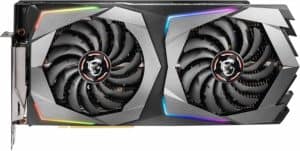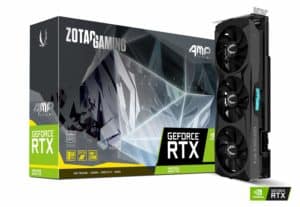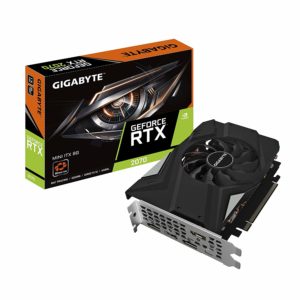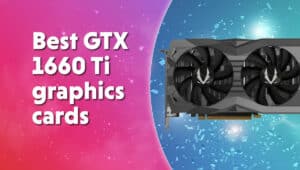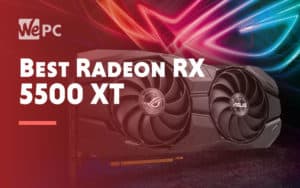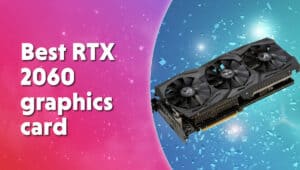Best RTX 2070 graphics cards 2024
Whilst there is no 30-series stock available, we explore the best RTX 2070 GPUs the market has to offer!
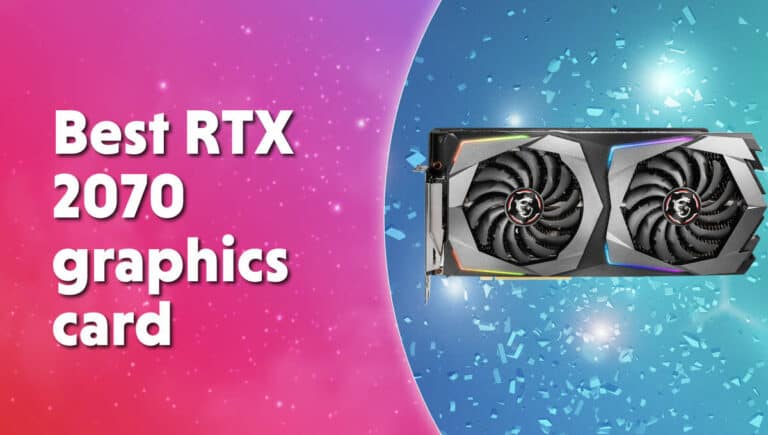
The RTX 2070 was released at the back end of 2018 and was brought to shelves as a mid/high-range GPU which was reasonably priced and boasted performance stats that knocked on the door of the top graphics cards available in today’s market.
The RTX range as many will know has been equipped with the latest real-time ray tracing technology, and AI-enhanced graphics and takes advantage of Nvidia’s powerful new Turing architecture which they say ‘Immerses you into incredible levels of realism and performance’.
Since its release, we have seen a plethora of custom cards follow, and in today’s article, we look at selecting our best picks, which ones are best suited to you, and how each of them performs in the heat of battle. We’ve been looking forward to this for a while now so let’s dive straight in.
Our Top Picks
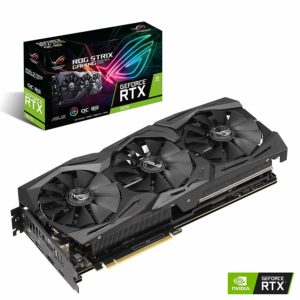
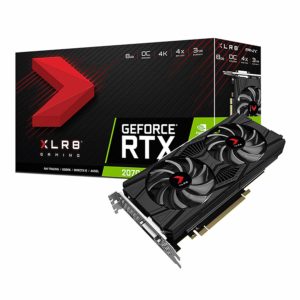
How we choose the best graphics card
When we select the best components in our build guides, we like to see what they can handle first. Whether or not we’re looking at graphics cards, monitors, or CPUs, this isn’t an easy task.
Only once we have completed our product research are we confident in making a recommendation. We do this so you don’t have to, this testing and benchmarking can be quite a time-consuming process and we know many of you don’t have the time to do this.
Here at WePC, our team of tech enthusiasts takes care of all that work for you, bringing you easy-to-read, highly-researched reviews for the products you need.
How we test
In order to be as honest as possible, we try to only recommend products that we have personally tested. This lets us not only create the best build guides, but it makes sure that they are both accurate and up-to-date.
Most of the products we recommend have been through a strict testing phase. This looks at performance, notable features, and price. We make sure we push each product to its limit when testing as we want to truly know what it is capable of before making a recommendation.
This is what allows us to be so confident in the products we recommend. We hope this enables us to give accurate and authentic reviews that help you make the final decision when choosing your product.
How will these cards perform?
As mentioned above, the RTX 2070 was brought to shelves as the third wave of 20 series cards after the ever-popular 2080 range. Nvidia said the card was designed for consumers who wanted to reap the rewards of the new 2080 but without the massive price tag that came with it, and thus we have the 2070.
The new range comes equipped with next-generation Turing architecture which unlocks full access to the RTX signature technology, Real-time Ray tracing. RTX is a groundbreaking new tech that renders lifelike imagery through incredibly detailed and accurate lighting, reflections, and shadows. It also makes use of deep learning super-sampling (DLSS) and its impressive AI-enhanced graphics which are all paired with the world’s fastest 8GB GDDR6 memory. Nvidia claims that the new board actually runs faster than that of the GTX 1080 which we will touch upon later.
So what does this mean on a practical gaming level? Well, the 2070 has been developed to handle 1080p, 1440p, and 4k at high settings however after numerous tests across several gaming platforms we noticed gaming at 4k would severely reduce your FPS to anywhere between 30-50fps. We also tested the real-time ray tracing in Battlefield V under all 3 different resolutions at high settings and 4k was almost unplayable. However, reverting to a lower resolution compensated for the lack of power and allowed for fairly decent gameplay.
Overall the performance of the 2070 is fantastic and with the influx of Real-time ray tracing being the future of gaming, it’s always good to know you are equipped to tackle the change.
RTX 2070 Vs. GTX 1080
Many questions have been asked prior to the 2070’s release on whether or not it can stand up to the punching power of the GTX 1080 which has become so popular amongst gamers worldwide.
Well, we’re here to answer the question and see which one truly takes the crown in performance. We did comparison benchmarks across a number of games and tasks to see which one came up trumps and to no one’s surprise found the 2070 to be between 5-20% better on average. The only game where FPS stats were less at the lower end was CS:GO. With the clock speeds of both of these cards being very similar, depending on which aftermarket model you go for, you can chalk the performance boost down to the new intelligence and the GDDR6 memory which is used in all RTX 20 series.
Now you’re probably saying to yourself at this stage, well that’s great but the 1080 is probably much cheaper and it’s only 5% less effective, and that’s where you would be wrong. Again, depending on which card you go for, the 2070 is pretty much the same price as the 1080. It’s been developed to be competitive in pricing whilst still being equipped with the latest tech. So to cut a long story short, the 1080 which is still a fantastic card, is the lesser of the 2 on a number of different tests and you should definitely reconsider if you were thinking about buying one.
Table Key and Terms
- Clock Speed – Clock speed refers to the internal, “core” clock of the graphics processor. The higher the clock speed, the better your performance.
- VRAM – VRAM refers to the “video RAM”, or memory available to the GPU. Discrete GPUs tend to come with their own VRAM– in the 1080’s case, this is GDDR5X VRAM, which is a bit faster than the industry standard GDDR5. The more VRAM you have, the better your card be at handling high resolutions and HD textures.
- Overclock – Overclocking refers to pushing the clock speed of a component higher to get more performance. Usually, this is done by the user, but the cards we’re listing here today all boast “factory overclocks”, which is overclocking done by the manufacturer and proven stable.
The Best RTX 2070 GPUs
In-depth Review

- Excellent acoustic performance
- Not far off the GTX 1080 Ti's performance
- Attractive design
- Pricey
MSI has brought a rather good card to the table with the Gaming Z RTX 2070. This graphics card brings about some tweaks from MSI that bring its performance seriously close to the impressive GTX 1080 Ti. Despite this increase in performance, we don’t really see any dramatic rise in temperatures. furthermore, the card is incredibly quiet for what it does. Like most GPUs, the fans run idle until needed but the card has been measured at around 33 DBa, which is considered excellent.
When it comes to gaming there is little to separate the various GPU models that you can buy but you are looking at something that sits above the GTX 1080. You can game pretty well in 1440p and there is some room for 4K but this is certainly better suited for lower resolutions. The image quality is superb and the 8GB of VRAM goes a long way to future-proof this card for years to come.
The Gaming Z comes with aesthetics that many with a tempered glass case will love, that being said, the design could be quite loud for some. Either way, the RGB lighting looks great and the available effects through the Mystic Light software are great to see.
The only downside to this GPU is the price as you could argue that the MSI Armor version offers better value. That being said, the temps never really go past 66-67 degrees while gaming and you do seem to get a slight FPS increase on the other version. So for a card that ticks all the boxes and manages to perform extremely quietly, go for the MSI Gaming Z RTX 2070!
- Brilliant cooling setup
- Fantastic out the box performance
- RGB lighting
- Very large form
If you’ve read our Best RTX 2060 article then you’ve probably noticed that Gigabyte and Asus Rog have switched positions in this article. It was always going to be difficult to give the ROG the top performance position due to its lower out-of-the-box clock speed. However, what we are comfortable in saying is that the ROG takes the top spot when considering a solid all-round option. Fantastic cooling which was both the coolest and quietest, a fantastic meaty design that boosts the aesthetics of any rig, and the ability to manually overclock very efficiently. Asus’s brilliant heatsink and fan configuration overclocking the Rog becomes much more forgiving and achievable at high levels. Obviously whenever overclocking any PC component take extreme care, but with the ROG you do have the confidence to really push this card. The Rog is currently retailing under $600 dollars and wins many of our benchmark tests for performance and FPS. Overall the top all-rounder on this list.
- Extremely good price to performance value
- Solid cooling setup
- Cheap price
- Can become noisey if stressed
PNY is considered to be one of the budget aftermarket brands which have really come out of the woodwork these last few years producing quality products at very affordable prices. Their RTX 2070 iteration, the XLR8 Gaming OC Edition, comes to shelves at the lower end of the price spectrum once again but surprisingly doesn’t really skimp on the performance. It comes clocked at 1710MHz which is very respectable and a dual fan setup that offers a pair of scythe-bladed fans which do produce some noise but nothing which would be considered noisy. A honeycombed bracket and RGB light strip which sits on top of the cooling heatsink pair together to create a stylish look that is both sleek and versatile. You get all this for substantially less than the other cards on the list and for this reason we have awarded the PNY with our Top budget award.
- Great out of the box clock speeds
- Brilliant slim design
- Value for money
- Gets quite loud under stressful situations
The Zotac, for anyone wondering, just missed out on the top all-rounder spot but is still considered one of the best RTX 2070s available to date. It has an impressive 1860Mhz clock speed and was very high on our list of performance and FPS benchmark tests. The areas that let this card down were unfortunately build quality and its cooling system, which under pressure was fairly loud and quite warm. The positives of this card, however, are a great slim design that will fit into almost any case, fantastic versatility in terms of OC’ing and compatibility, and finally, it’s the middle-of-the-road price tag. Overall a very good card but for an extra 40-50$ you could push the boat out and get one of the top-ranked models.
- Small form factor
- Great punching power for its size
- Very efficient triple fan heat sink
- Least powerful in our list
We always like having a Mini ITX version of the card were looking at in our list because it both promotes top performance and fantastic versatility. This card comes set at 1.62GHz which is factory overclocked from 1.41GHz and has Gigabytes fantastic single fan heat sink setup which is considered relatively quiet and efficient. If you;re considering a smaller build and want something that is both powerful and practical then this surely needs to be high on your list of primary considerations.
Best RTX 2070 GPUs frequently asked questions
Is RTX 2070 good for gaming?
The RTX 2070 is a great choice for a graphics card. It offers both good value and performance. Although it may be harder to find this many years after it was launched. So it should be a good pick these days to get a good balance.
Is RTX 2070 powerful?
The RTX 2070 is on the higher end of the spectrum when it came out. Which means it can get high framerates even by today’s standards. Although it might be a bit harder to find any in stock.
What is the best RTX 2070?
For the best choice of 2070, the MSI Gaming Z is a good choice model. With a small and sleek design, it packs a punch for its size. Whilst the choice of the ASUS ROG Strix is also a great pick of card with good design and overclock for a good performance boost.
Final Word
So, we come to the end of our best RTX 2070, and to our surprise, they all performed incredibly well under stress tests and FPS benchmarks. When looking for a 2070 it really all boils down to which one you feel has the best design and how efficient the heat sink and cooling system is. Of course, if you’re into overclocking then the heat sink is a vital piece of your GPU makeup and hopefully, in the above, we have outlined which ones are most effective. You can see how it improves over the 2060 with our RTX 2060 vs RTX 2070 comparison.
The performance difference between the cards in real-life situations is pretty slim, but we managed to fit each card into its own specific category to help consumers make the right choice. Below is the final roundup of what we thought:
- Performance – Performance is obviously a massive part of what consumers look for when buying a GPU, our top performer went to the MSI Gaming Z and would be a welcome addition to anyone’s build.
- All-round choice -For some, performance is not their only agenda, some are looking for the perfect all-around product and for us, that award went to the ASUS ROG STRIX. Solid performance, fantastic cooling, and superb aesthetics are we it gets this title.
- Budget – Looking for the new technology the RTX series has to offer whilst still offering brilliant value for money? Look no further than the PNY Geforce RTX XLR8 Gaming Edition.
- Balanced – The balanced pick is what it says on the tin, a balance between performance power, price, and aesthetics. Thanks to Zotac’s brilliant RTX 280 AMP EXTREME cooling system and clock speeds we consider this the perfect balance.
- Low Profile – Finally we come to our low profile pick which comes in the shape of the Gigabyte RTX 2070 Mini ITX. It’s perfect if you’re looking for solid performance in a small package.
Unfortunately, the 2070, which has been developed to have the same punching power as the 2080 but with a more realistic price tag, hasn’t filled those claims entirely. It’s quite a bit behind in terms of performance but we can forgive it as it’s a good 200-300 dollars cheaper.
Overall, if you’re looking to reap the rewards of Nvidia’s new ray-tracing GPUs but haven’t quite got the capital to fork out for their top-range card, the 2070 will tick those boxes at a much more affordable price point. It won’t just allow you to play future games that support the tech, it’ll also ensure you won’t need to upgrade for good years to come.
You can check out our GPU Hierarchy right here.
WePC is reader-supported. When you buy through links on our site, we may earn an affiliate commission. Prices subject to change. Learn more

